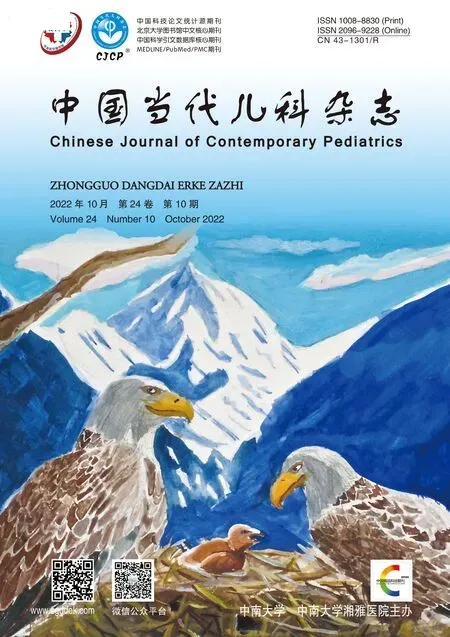Letter to editor:human monkeypox and the atypical outbreak
2022-11-25RujittikaMungmunpuntipantipVirojWiwanitkit
Rujittika Mungmunpuntipantip,Viroj Wiwanitkit
(1.Private Academic Consultant Center,Bangkok,Thailand;2.Joseph Ayobabalola University,Ikeji-Arakeji,Nigeria)
Dear editor, we would like to share ideas on the publication in your journal "Learning from the past:the history of human monkeypox and the atypical multi-country outbreak in 2022"[1]. To better understand the risk assessment and potential clinical and public health impacts of this outbreak in the future, Yao[1]provides a thought-provoking history of the 64-year interaction between the monkeypox virus and humans. He also provides a variety of information and viewpoints on the human monkeypox outbreak.
The current outbreak is very different from that in Africa. The discrepancy is associated with many factors, in which the environment and the human host have a crucial impact in addition to genetics and evolution. Typically, the patient has a cutaneous lesion in addition to a fever.However,the presence of neither a fever nor a skin lesion is more common in the current outbreak[2]. Some people may just have bizarre symptoms, such as neurological and digestive symptoms[3-6]. Occasionally, under certain circumstances, atypical skin lesions may occur.Hemorrhagic vesicles may also develop[2].
Yao[1]provides a history of the 64-year interaction between the monkeypox virus and humans and offers a variety of information and viewpoints on the monkeypox outbreak, which is useful for understanding the risk assessment and potential future clinical and public health impacts of this outbreak.Monkeypox is becoming rare again, mostly due to zoonosis[2-3]. The possibility of human-to-human transmission is currently being examined[2-3]. There is no doubt that past evolution and mutation could have had an impact on the recent change.
All professionals working in this new industry need to continue their education. Atypical symptoms of the disease must be considered. Last but not least,Isaacs[7]pointed out that cases of men who have sex with men (MSM) make up the majority of contemporary cases.MSM cases may not have a great awareness of their health condition to seek medical attention early. As previously indicated, the disease can manifest itself in a variety of ways, some of which may be mild and unnoticed. It could be the main factor in the eventual spread of the disease. It is vitally important to restore infection control, as we have just successfully done during the COVID-19 epidemic.
以下是对应的中文翻译。
致编辑的信:人感染猴痘和非典型暴发
编辑:我们想分享一下阅读贵刊刊发的论文“知往鉴今:人感染猴痘史及其非同寻常的2022年多国暴发疫情”[1]的体会。为了更好地理解风险评估及此次疫情对未来临床和公共卫生的潜在影响,该文作者姚开虎[1]梳理了发人深省的猴痘病毒与人类之间64 年的相互作用史。他同时提供了关于人感染猴痘暴发的各种信息和观点。
当前的疫情与非洲疫情有很大的不同。导致差异的原因与许多因素有关,除了遗传和进化之外,环境和人类宿主也具有至关重要的影响。典型人感染猴痘患者除了发热外还有皮肤病变,然而此次疫情中患者既无发热,也无皮肤病变的情况很普遍[2]。有些患者可能只是有非特异的症状,例如神经和消化问题[3-6];特定情况下偶尔会出现不典型的皮肤病变,也可能出现出血性囊疱[2]。
姚开虎[1]撰写的这一篇关于猴痘病毒与人类相互作用的64 年历史,以及关于猴痘暴发的各种信息和观点,有助于理解猴痘暴发的风险评估及对临床和公众健康的潜在影响。由于猴痘是人畜共患病,暴发后通常会重新变得罕见[2-3]。人传人的可能性正在进行评估[2-3]。毫无疑问,过去的进化和突变可能对最近观察到的变化已产生了影响。
所有目前从事于这个行业的专业人士都必须不断学习,更新知识,工作中警惕该病的非典型症状。最后但同样重要的是,Isaacs[7]指出,男男性行为者占此次疫情病例的大部分。男男性行为患者可能不会明显意识到自己的健康问题而尽早就诊。正如以上所述,这种疾病的临床表现多样,其中一些可能表现轻微,易被忽视,这可能是该疾病最终传播的主要因素。恢复那些我们刚刚在新型冠状病毒肺炎流行期间成功实施的感染控制措施至关重要。
